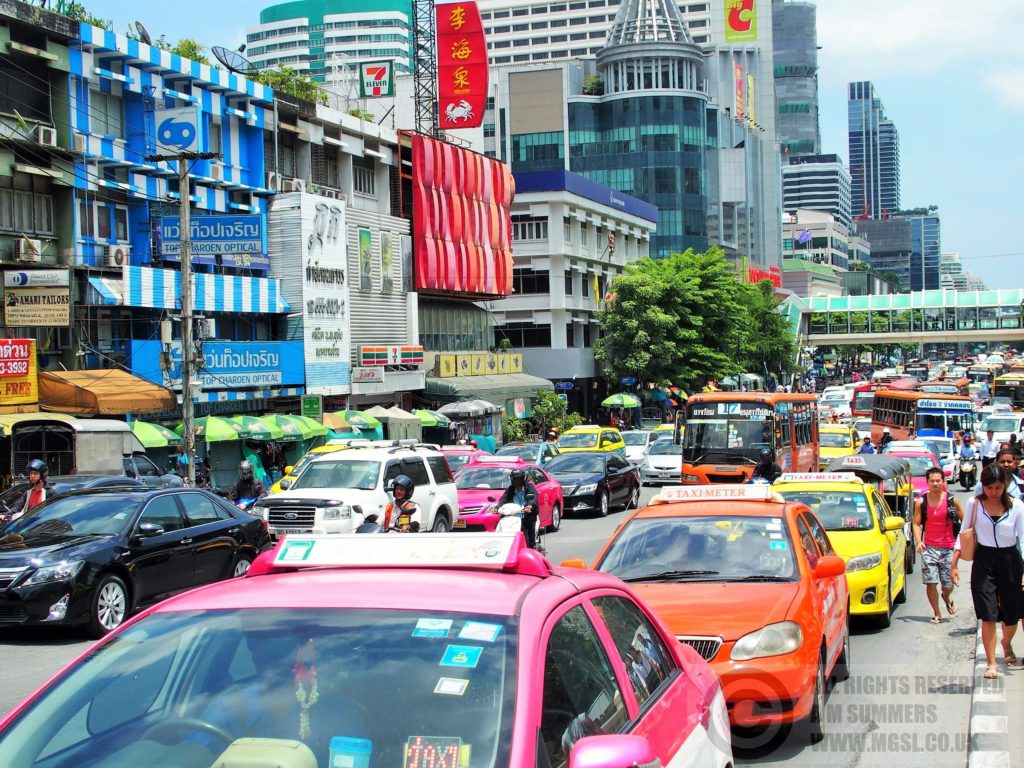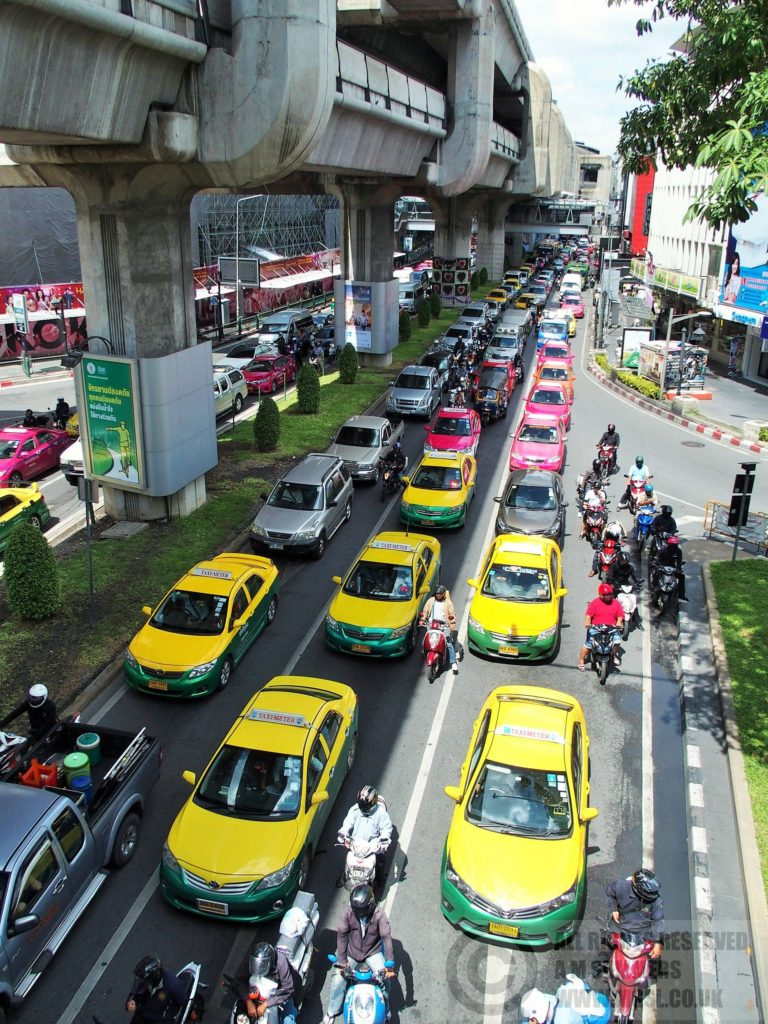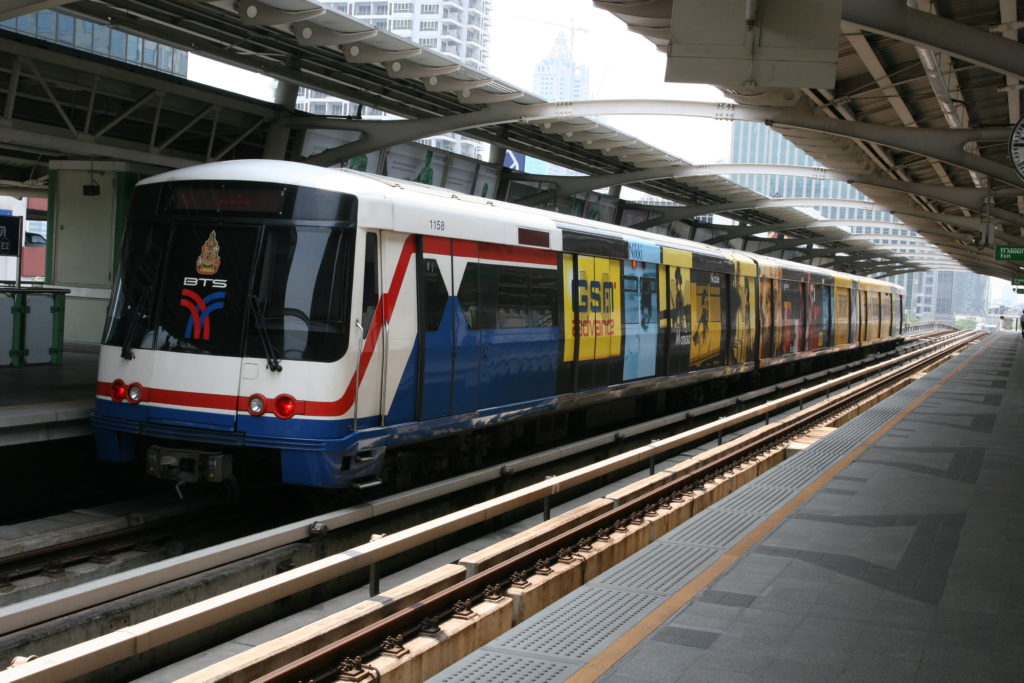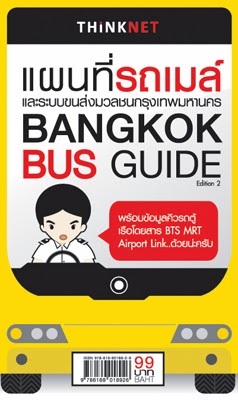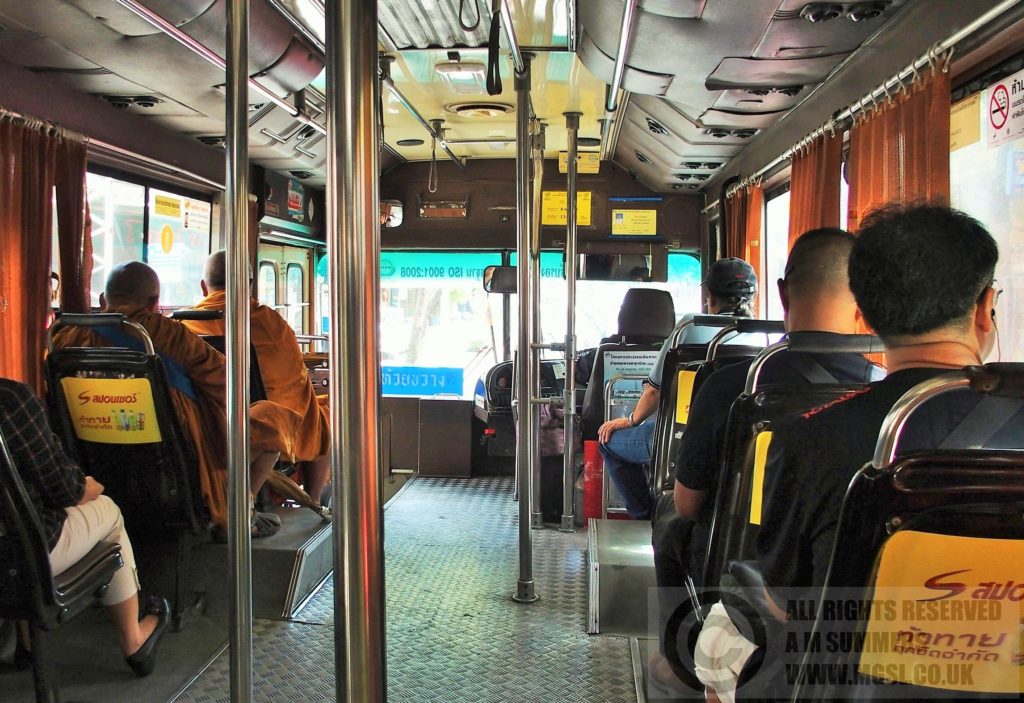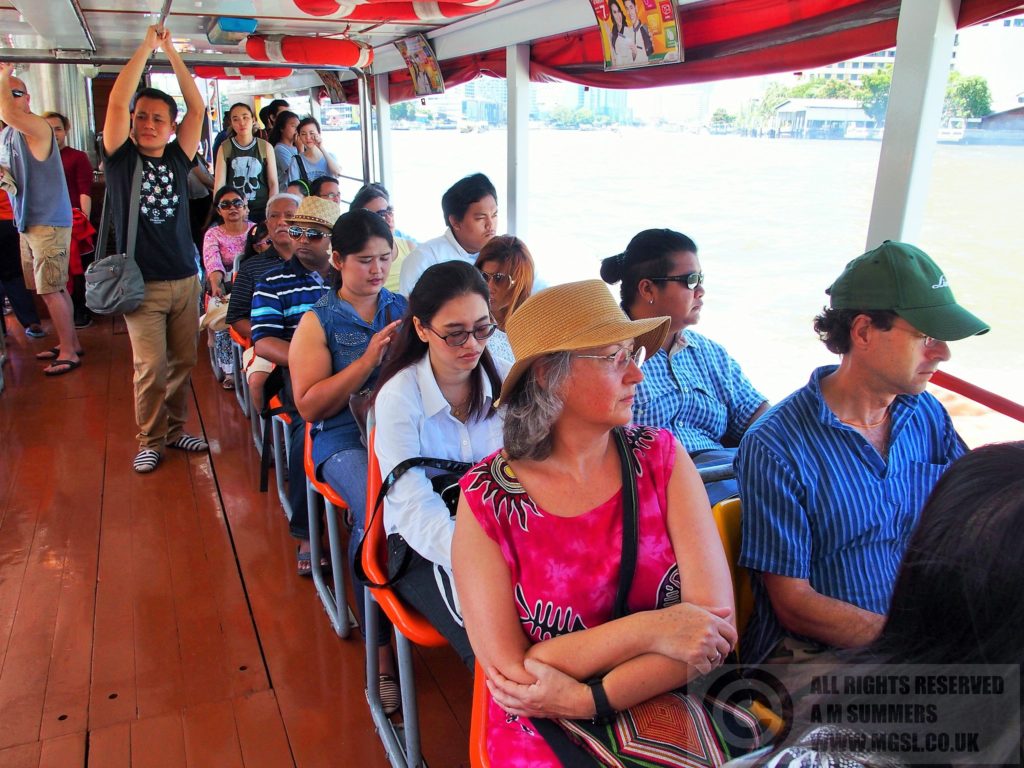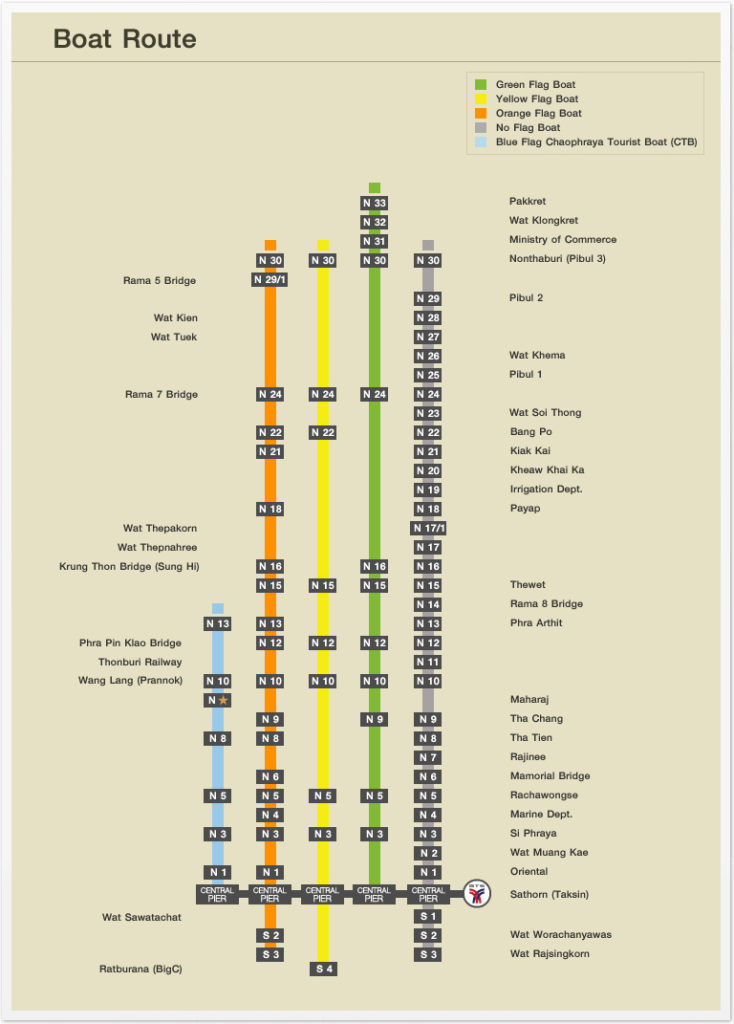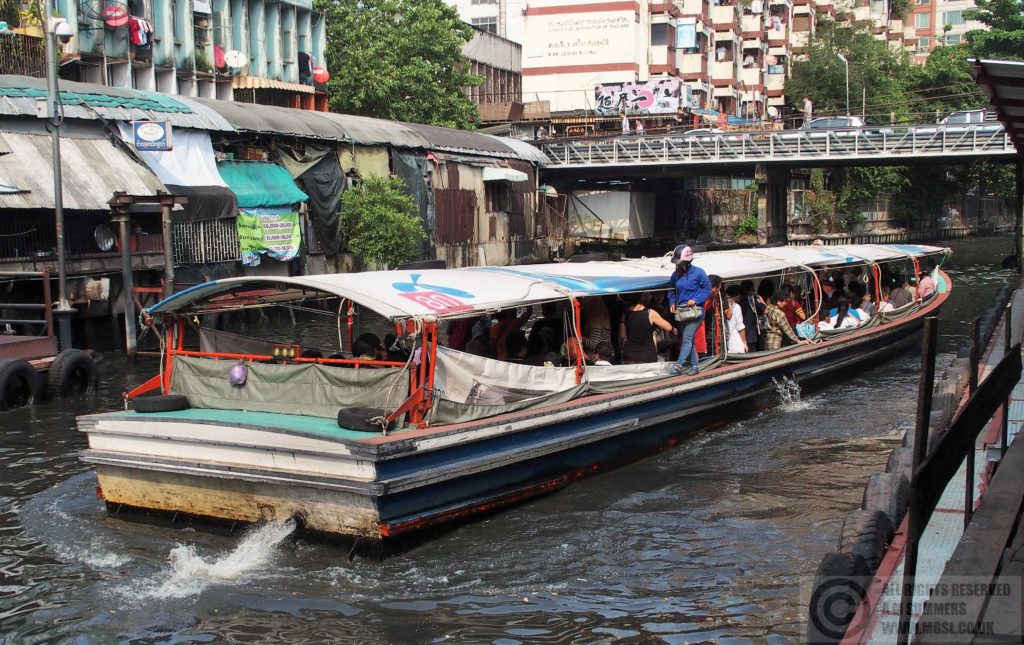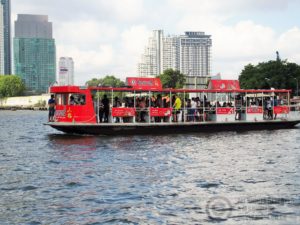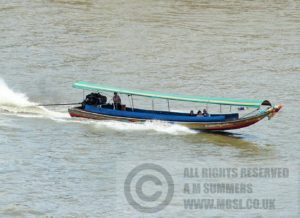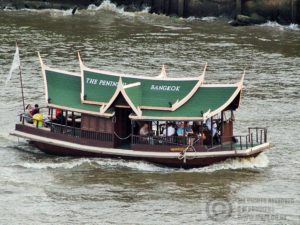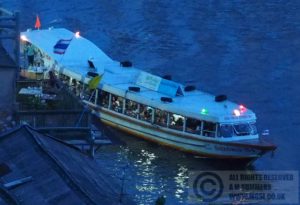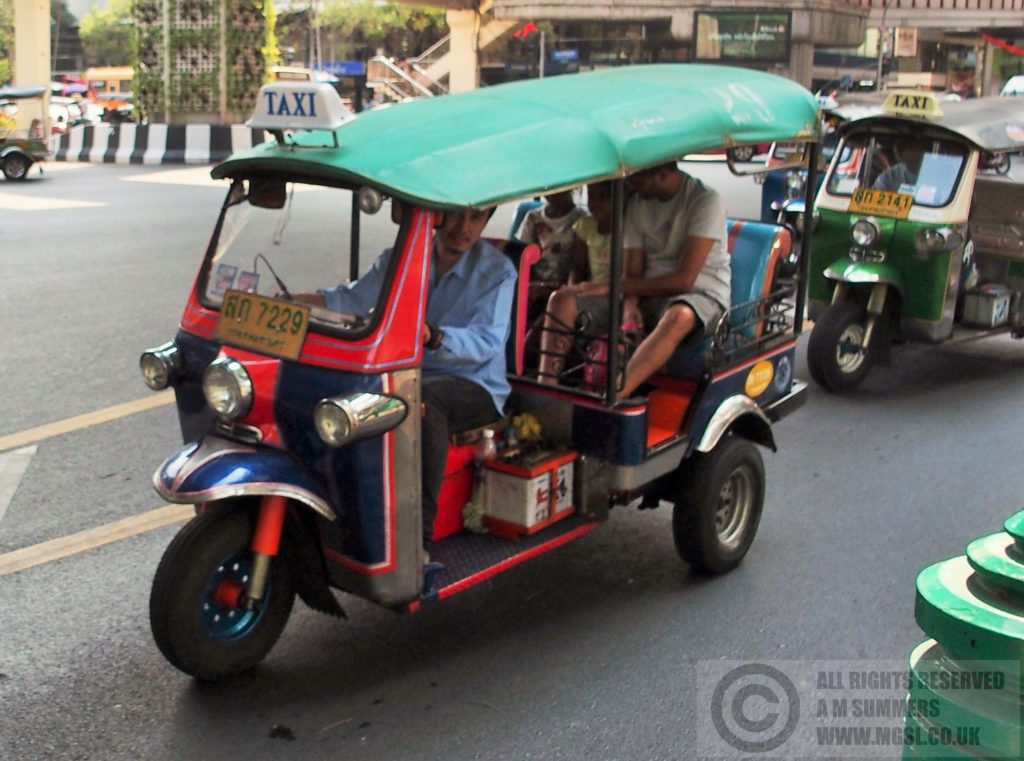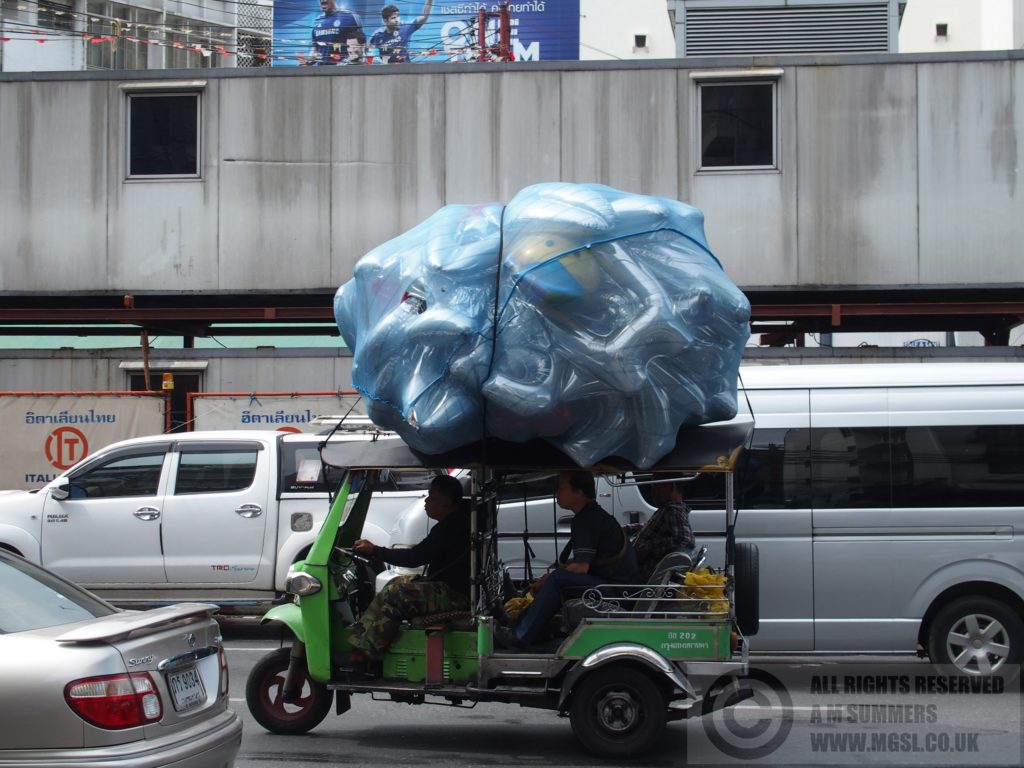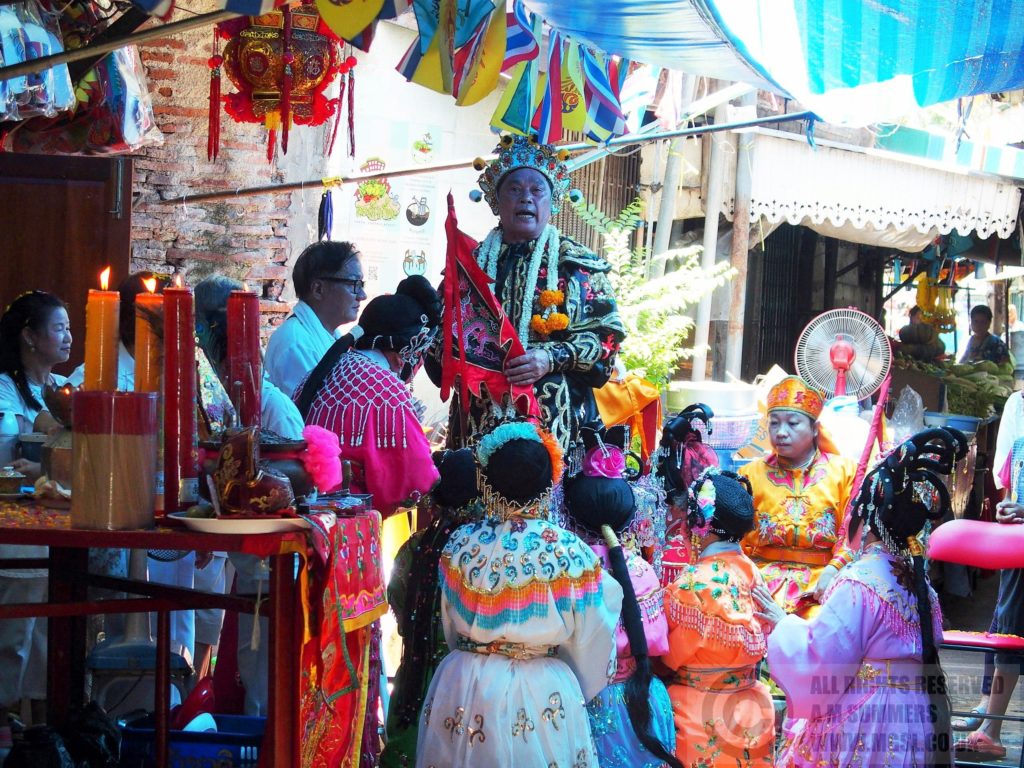The good thing about getting around Bangkok is that there are so many options, and local transport is extremely cheap compared with western countries. The biggest problem is the traffic, often with the weather (heat, and sometimes torrential rain) coming a close second.
It’s tempting just to take a taxi. According to the official fare chart a taxi all the way across the centre of the city from Wat Pho to Nana Plaza will only cost about ฿120, although in reality waiting in traffic might push the fare to three times that. But still that’s pretty cheap for what might be a 2 hour journey. Even where tolls are involved (you pay those on top of the fare), they don’t add a prohibitive amount – about ฿75 from Bang Rak to Don Mueang).
Since the 2014 military takeover taxi drivers have become more willing to use the meter, but there are allegedly still plenty of occasions when they will refuse to turn it on and insist on agreeing a flat rate. We only encountered the problem when a friend wanted to take a taxi to Suvarnabhumi Airport at midnight. The Expatriate has a particularly good and detailed explanation of how to use Bangkok taxis like a pro.
The main reason that we rarely used taxis was that they just took so long. The metro and skytrain are a much quicker way of getting around Bangkok, and only really crowded at peak times (although don’t expect to get a seat on the if you board anywhere in the central area). If you are going to use either service frequently it’s worth considering a stored value card, to avoid the rush hour queues at the ticket machines and the need for change. Unfortunately there is no combined card as the metro and skytrain are run by different companies. The main weakness of the skytrain and metro is that they both stop well to the east of the old city, so are useless for visiting most of Bangkok’s tourist attractions.
When we were staying in Talad Noi our neighbour, a long-term American expat, was impressed when we told him we used Bangkok’s buses. Apparently very few foreigners do – but I don’t know why. The bus will always show a route number in western numerals, which is really all you need. Although it’s possible to look up your journey online download schematic maps here, the paper Bangkok Bus Guide is invaluable for seeing exactly what bus goes where – available at bookshops for ฿99. Bus stops are normally marked by a blue sign, but a cluster of waiting passengers is the best clue to a stop’s location.
It’s true that there is a bewildering array of bus types which charge different fares, from non-AC red and cream ones charging only ฿6.5 (but sometimes free) to orange AC buses charging a distance-related fare (we usually paid ฿11 or ฿13). But even before I mastered numbers in Thai it wasn’t a problem – if there wasn’t a notice somewhere inside the bus displaying the fare, I simply stated our destination and proffered a handful of change for the conductress to take the right sum.
But traffic jams affect buses are even more badly than taxis, so it pays to have a feel for which roads are worst affected. When we were staying in Talad Noi we would regularly take the 36 or 93 to MBK or Panthip Plaza – the traffic wasn’t an issue and we usually got a seat. But the 73 took an hour to cover the 5km from Rama 9 to Siam Square and was packed to crushing capacity.
One of the fastest, cheapest and most enjoyable ways of getting around Bangkok is on the water. The boats along the Chao Phraya are well used by locals and tourists alike, although many tourists inexplicably opt for the ฿40 blue-flag boat instead of the ฿10-15 no-flag or orange-flag boats (make sure you get your change as the conductor sometimes ‘forgets’). A full explanation of the flags and fares is here, and the chart showing which service stops where can be found at each pier. Be on your guard against being ‘hijacked’ onto a tourist boat, especially at Central pier.
To get across the river there are little ferries that ply continually back and forth for ฿3. Less used by tourists is the Saen Saep service running east along the canal from near the Democracy Monument, with useful stops near Siam Square. It’s only ฿10-20, but it can be very crowded and a degree of agility is required to board and disembark, unlike the Chao Phraya express boats which are quite easy. The noisy long-tail boats that zoom up and down the Chao Phraya are the equivalent of taxis. Locals do use them for A to B journeys, but tourists are expected to want a tour around the canals, for which the quoted price may be anything up to an eye-watering ฿2500 for a 1-hour trip. Do your research before considering taking a longtail.
Another useful kind of boat is a free private shuttle service. The River City Mall has one that will take you down to Central pier every 20 minutes – just get a ticket from the customer desk near the mall entrance. There is also a free service downriver from Central pier to Asiatique, although this doesn’t start until 4pm. The large riverside hotels also have free shuttle boats to central for guests, although I’ve no idea how rigourously they check that you are actually staying in the hotel. You could probably claim to be having a meal there anyway.
- cross-river ferry
- longtail boat
- hotel shuttle
- orange-flag ferry
Popular tourist areas are plagued by drives of samlors, or ‘tuk-tuks’, importuning you to take a ride for some ridiculously inflated fare. Unless you have never been on one elsewhere in Asia and are desperate for the experience, don’t bother. The drivers are notorious for scams and rip-offs, and you will pay more for the same traffic-choked journey than in an air-conditioned metered taxi, where at least you are protected from traffic fumes.
There are also songthaews in Bangkok, trucks with two rows of seats facing each other and seating about 12 people. Unlike in Chiang Mai and Hua Hin, Bangkok’s songthaews seem to be firmly reserved for locals as the destinations are written only in Thai and I was never able to find any useful information online.
Other than the boats, the fastest way of getting around Bangkok is the motorcycle taxi – but it’s also the most dangerous as drivers weave in and out of the traffic and drive the wrong way down one-way streets. I can’t even ride a bicycle so wouldn’t even consider it, but if you are confident on a scooter and don’t have heavy luggage to unbalance you, you might give it a go. Drivers wear numbered orange vests and loiter near popular spots and transport interchanges. Agree a fare (from ฿10) before you set off.
And my favourite way of getting around Bangkok? It depends on the time of year, but in the cooler, dry winter months I loved walking. The pavements are not in too bad a condition and you see far more of ordinary Bangkok life than from any vehicle. So if you are planning a trip to Bangkok be sure to schedule in some time for wandering, rather than just whizzing round between the famous shops, markets and tourist spots.


